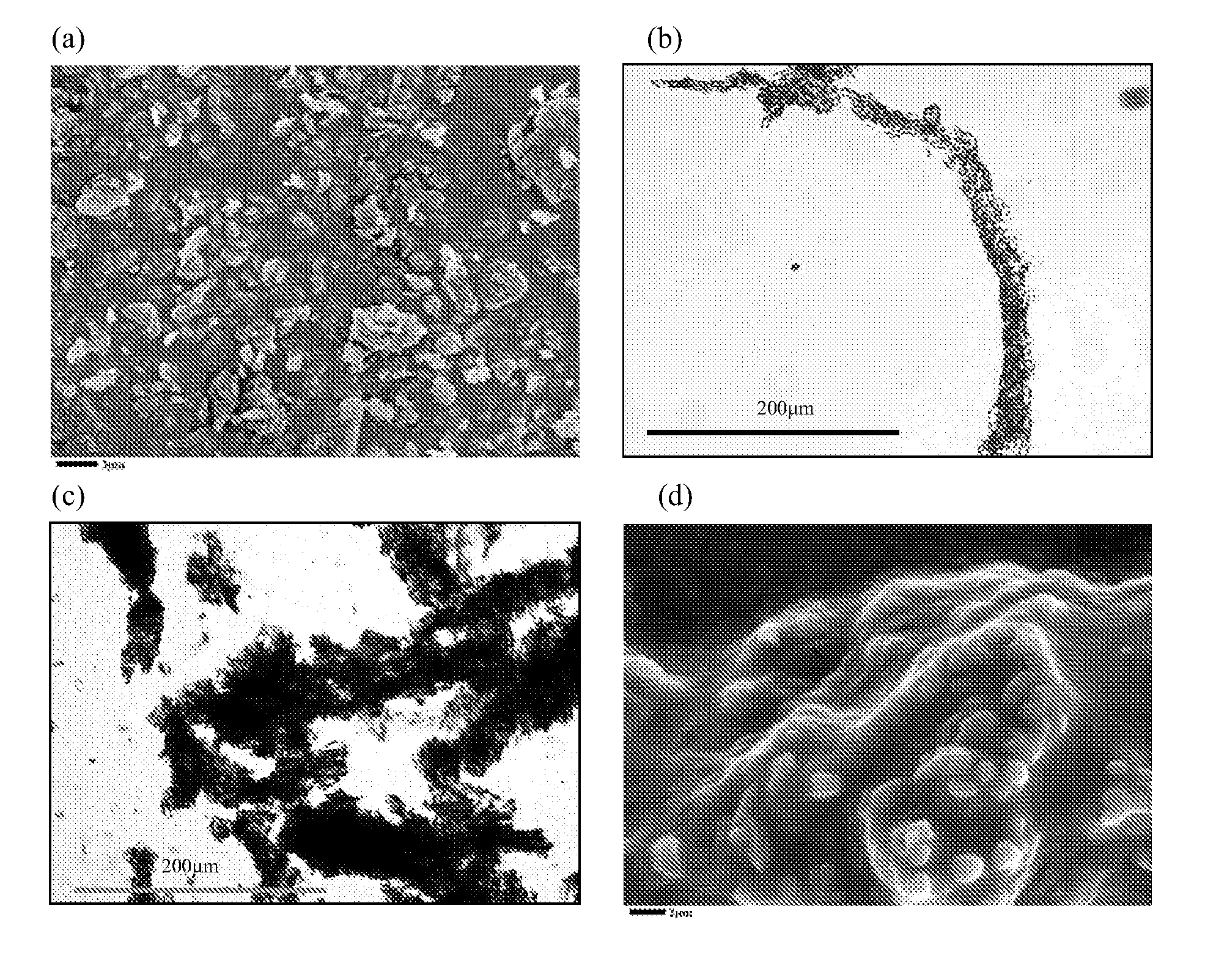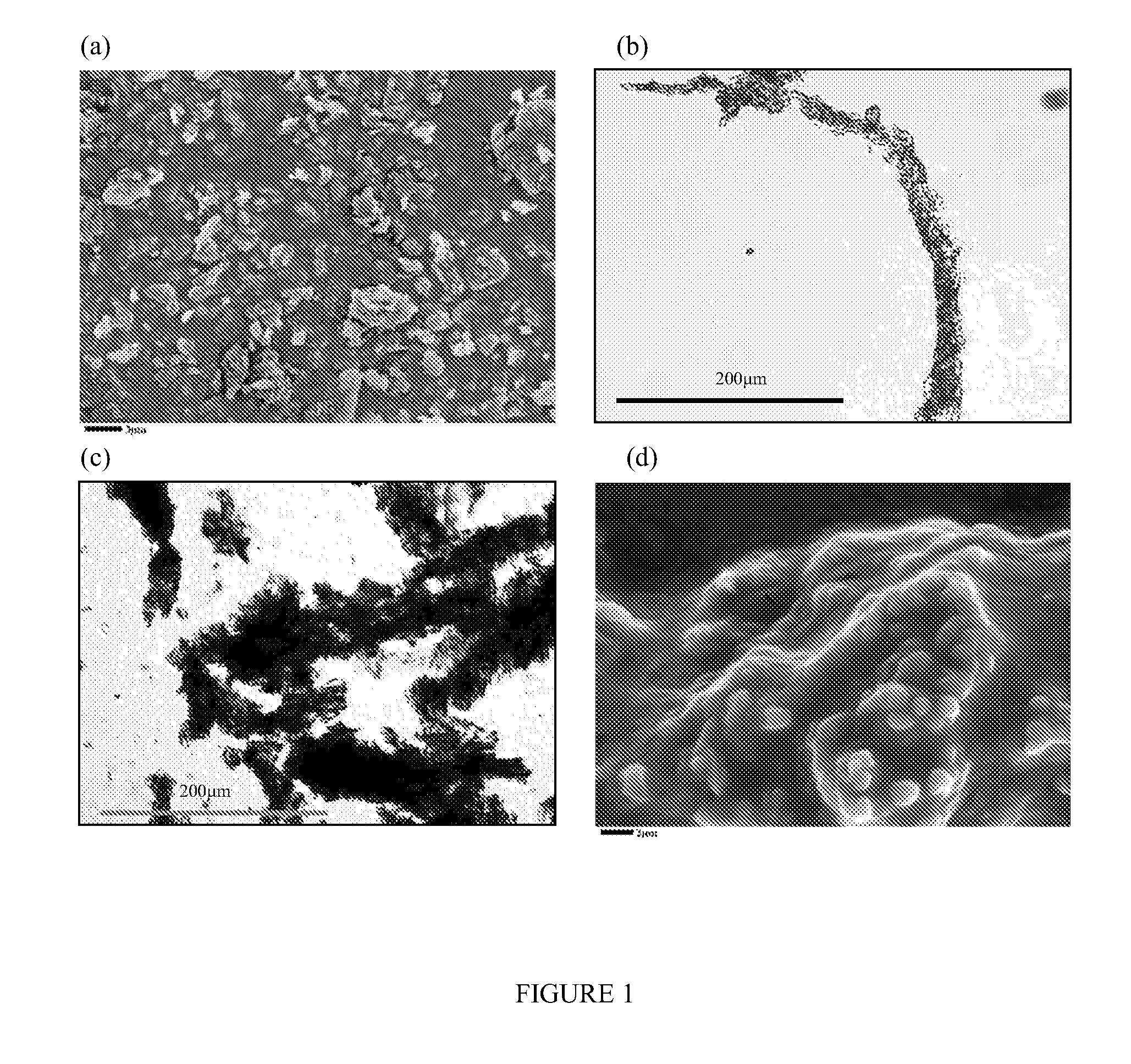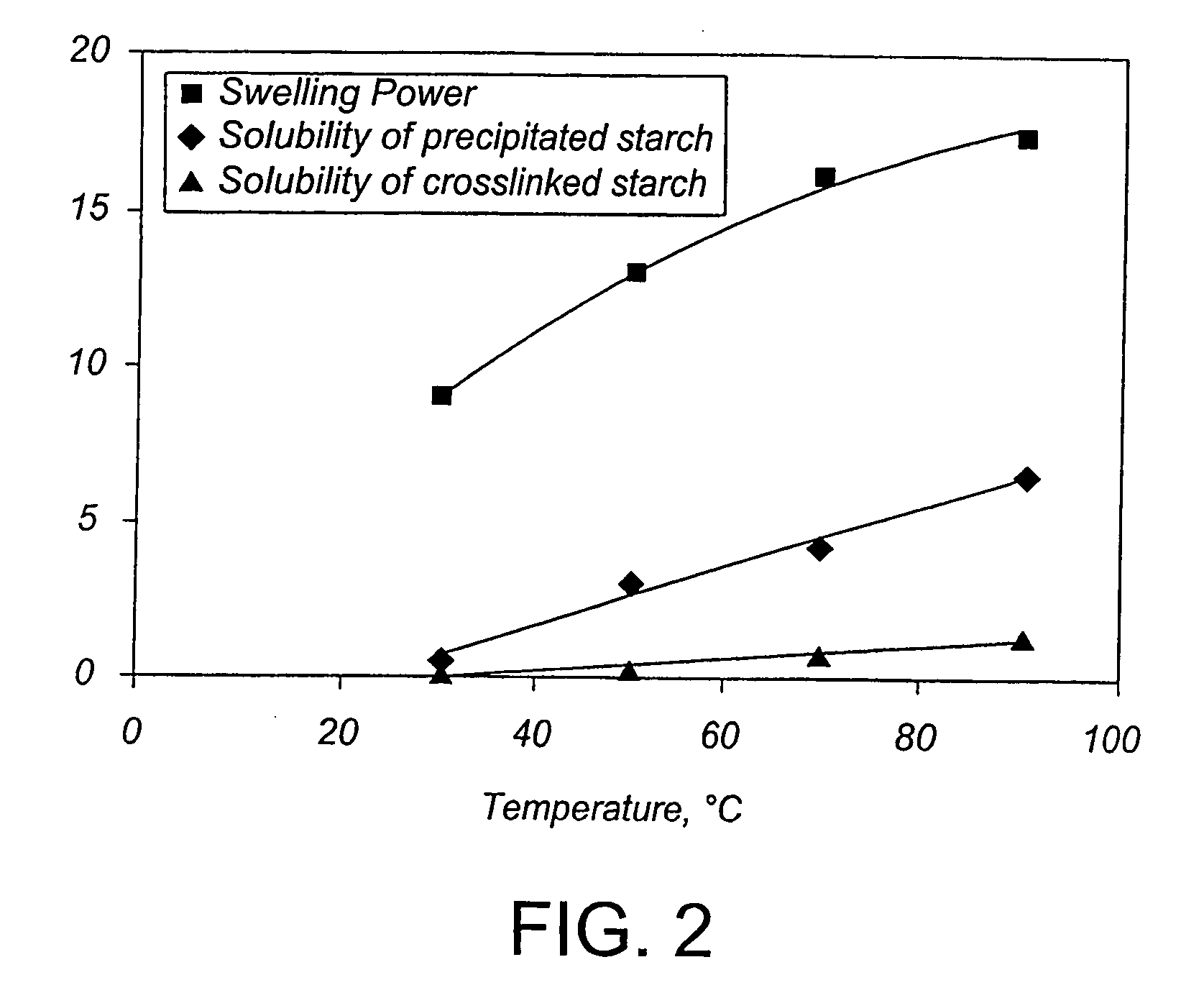Methods and compositions for papermaking
a technology of fillers and compositions, applied in the field of surface-modified fillers, can solve the problems of paper can suffer loss of strength, stiffness, bulk and sizing, and limit the amount of fillers that can be substituted for papermaking fibers,
- Summary
- Abstract
- Description
- Claims
- Application Information
AI Technical Summary
Problems solved by technology
Method used
Image
Examples
example 1
Materials
[0071] Calcined kaolin clay was obtained from Dry Branch Kaolin Co., Inc. Raw corn starch was used for this study. Ammonium sulfate was obtained from Aldrich. Bleached hardwood and softwood pulps were each refined in a Valley beater to a freeness of 400 CSF. Equal proportions of the two pulps were mixed, and the mixture was used as the base pulp furnish for the handsheets. Percol-175 (cationic polyacrylamide retention aid) was obtained from Ciba Specialty Chemicals. Crosslinker, Eka AZC 5800LN (Ammonium zirconium carbonate, 30% solution), was obtained from Eka Chemical Inc.
Preparation of Fibrous Clay-Starch Composites
[0072] Clay-starch composite (1:1) was prepared as described, infra. 5 g of clay was added to 3-4% uncooked raw corn starch suspension that contained 5 g of dry weight starch. The mixture then was stirred and cooked at 95° C. for 30 minutes. Cooked clay-starch mixture was poured into 40% ammonium sulfate solution with 500 rpm stirring speed. Fibrous starch-...
example 2
Materials
[0089] Kaolin clay was obtained from Dry Branch, Inc. and raw corn starch (B200) was obtained from Grain Process Inc., respectively. Ammonium sulfate (reagent grade, ≧99.0%) was obtained from Aldrich. Bleached kraft hardwood and softwood pulps were refined in a Valley beater to a freeness of 400 CSF, respectively. Equal proportions of the two pulps were mixed, which was used as the base pulp furnish for the handsheets. Percol-175 (medium-charge density, high molecular weight cationic poly-acrylamide retention aid) was obtained from Ciba Specialty Chemicals that was used only for retention of untreated clay. No retention aid was added if the clay-starch composites were used as the filler because of their relative large particle size and very high mechanical retention in the handsheets.
Preparation of Clay-Starch Composites
[0090] Clay-starch composites were prepared following the method descried by Yoon and Deng (Yoon, S, and Deng, Y. Clay-starch composites and their appli...
example 3
[0119] In this study, the precipitation of starch was carried out through the formation of water-insoluble starch-fatty acid complexes in the presence of clay particles. It has been reported that amylose could be precipitated by fatty acids in a microcrystalline condition. The mechanism of the complex formation between the starch and fatty acid was once thought to be the formation of ester linkages but it is now believed that unbranched polar compounds, e.g., fatty acids and their monoglycerides, form helical inclusion complexes with amylose under suitable conditions. These complexes are considered to be similar to the blue polyiodide complex of amylose. The complexed molecule is thought to occupy the central axis of a helix consisting of 6, 7, or 8 glucosyl residues per turn, with a repeat spacing of 0.8 nm and internal cavity is considered to be a hydrophobic tube. The hydrophobic group of complexing agents can lie within the amylose helix and is stabilized by Van der Waal contact...
PUM
| Property | Measurement | Unit |
|---|---|---|
| pH | aaaaa | aaaaa |
| pH | aaaaa | aaaaa |
| dry weight | aaaaa | aaaaa |
Abstract
Description
Claims
Application Information
 Login to View More
Login to View More - R&D
- Intellectual Property
- Life Sciences
- Materials
- Tech Scout
- Unparalleled Data Quality
- Higher Quality Content
- 60% Fewer Hallucinations
Browse by: Latest US Patents, China's latest patents, Technical Efficacy Thesaurus, Application Domain, Technology Topic, Popular Technical Reports.
© 2025 PatSnap. All rights reserved.Legal|Privacy policy|Modern Slavery Act Transparency Statement|Sitemap|About US| Contact US: help@patsnap.com



